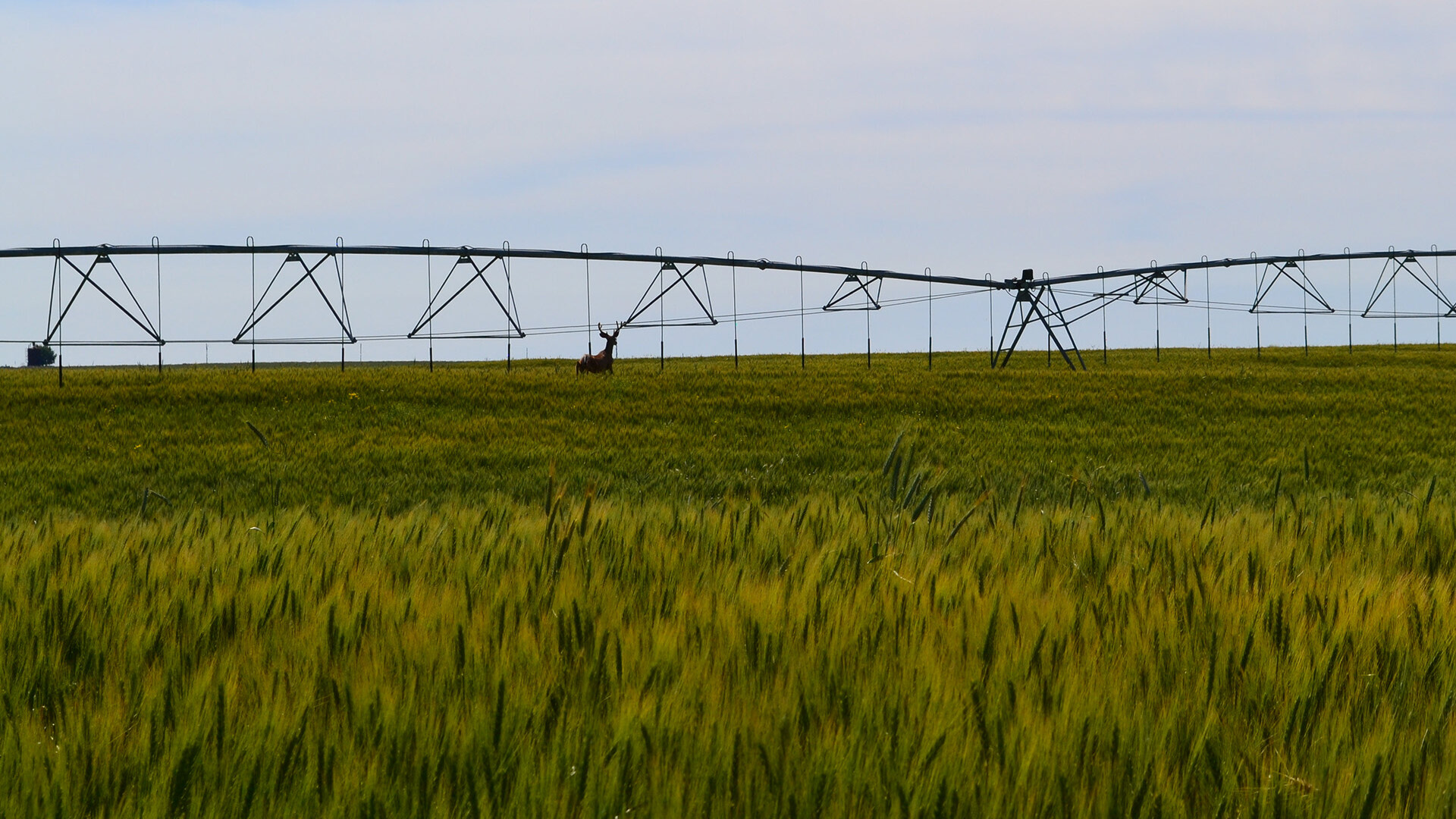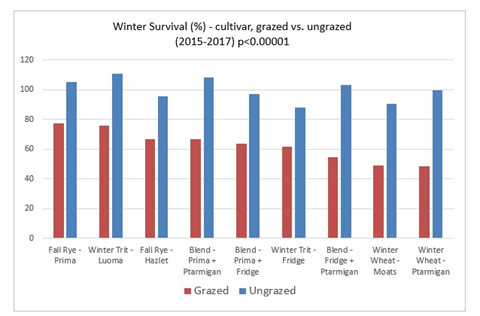Results
Trial 1 - winter cereal grazing (crop type, cultivar, and seed treatment)
The study showed that cultivar selection had significant effect on fall and spring plant density. Also, grazing significantly lowered spring survival compared to non-grazed plots (p <0.001). The same results are seen for winter survival except for the year 2017.
However, winter cereals demonstrated that they could withstand the removal of the above ground biomass and continue to grow after grazing. Between grazed cereals, fall rye (Hazlet 78%, Prima 88&) and winter triticale (Luoma 88%, Fridge 89%) have higher survival rates compared to winter wheat (Moats 69%, Ptatmigan 75%). In general, the study demonstrated that grazing significantly impacted survival in different crops and cultivars, but not by treatment of CMVC and check.
Contrary to survival, fall biomass did not show significant differences among the cultivars. Statistically, Fridge winter tritcale (11.45 T/ha) had the highest total biomass and Prima fall rye (9.02 T/ha) had the lowest. Fall biomass had significantly richer nutrients for feed value over silage. Also, grazing increased yield in all years. The highest averaged yield belongs to grazed Luoma triticale (91 bu/ha) and the lowest is an ungrazed blend of Ptarmigan winter wheat with Prima fall rye (66 bu/ha).
Trial 2 - Winter Wheat Seeding Date
Early seeding from early to mid-August increases the fall biomass but decreases winter survival and yield. The optimal seeding period for Moats and Ptarmigan winter wheat is the first two weeks of September. Silage biomass (around 8 T/ha) of winter wheat in different seeding dates showed higher values vs fall biomass (around 2 T/ha). The grazed plots showed an increased yield in both wheat cultivars. Moats had an 11 bu/ac higher yield on average than Ptarmigan in the ungrazed plots.
Final report
|





